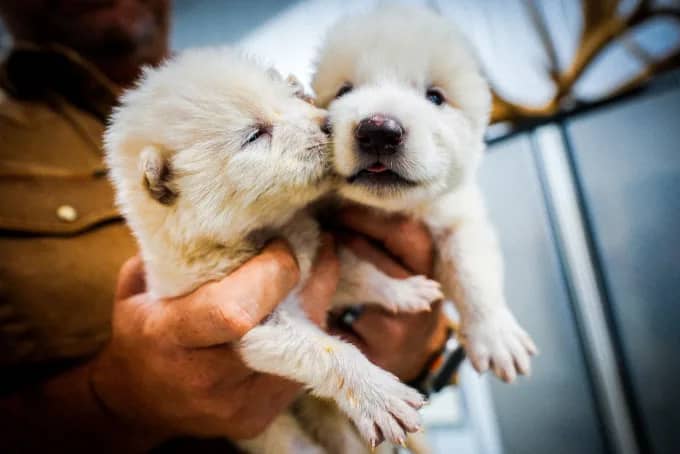In a landmark achievement for science and biotechnology, Dallas-based company Colossal Biosciences has announced the birth of three dire wolf pups the first of their kind in over 12,000 years.
Using ancient DNA, cloning, and advanced gene-editing techniques, scientists created a hybrid species that closely resembles the extinct Aenocyon dirus, a prehistoric predator once native to North America and famously depicted in Game of Thrones.
The pups were born after researchers edited grey wolf cells, their closest living relative, using DNA from fossils dating back 13,000 and 72,000 years. The edited cells were cloned and implanted into domestic dogs, which carried the pregnancies to term. Two male pups were born in October 2024, followed by a female in January 2025.
“This massive milestone is the first of many coming examples demonstrating that our end-to-end de-extinction technology stack works,” said BenScientists Resurrect Extinct Dire Wolf After Its DisappearanceFor Over 12,000 years
Lamm, co-founder and CEO of Colossal Biosciences.
The dire wolf pups are being raised on a secured 2,000-acre site equipped with zoo-grade fencing and monitored via drones and surveillance systems. While the animals are habituated to humans, they remain wild and untamed.
Not Just a Look-Alike
While the resurrected wolves share 99.5% of their DNA with grey wolves, Colossal focused on restoring key traits that defined the dire wolf such as a broader skull, thicker fur, and powerful jaws. The company made 20 genetic edits across 14 genes to achieve the desired phenotype.
Beth Shapiro, Colossal’s Chief Science Officer, explained,
“We’re not aiming for a 100% genetic match. Our goal is to recreate functional versions of extinct species. These pups express the essence of what it meant to be a dire wolf.”
A New Frontier in Conservation and Science
Colossal has raised over $435 million since launching its ambitious de-extinction projects, which also include efforts to revive the woolly mammoth, the dodo, and the Tasmanian tiger. The dire wolf achievement marks the first successful animal brought back from extinction using its platform.
The company believes this technology could play a vital role in conservation. It recently used similar methods to clone red wolves, one of the world’s most critically endangered canids, potentially paving the way to enhance genetic diversity in threatened populations.
However, experts caution that de-extinction raises ethical and ecological questions. While the technology holds promise for conservation, critics argue that resurrected species may struggle to find a place in today’s altered ecosystems and that the funds could be better spent preserving currently endangered species.
Environmental ethicist Christopher Preston noted
“It’s hard to imagine dire wolves ever being reintroduced into the wild, especially when we can’t even secure space for grey wolves in places like Montana.”
Despite the debate, the successful creation of the dire wolf pups represents a leap forward in genetic science and opens the door to further breakthroughs in de-extinction and biodiversity restoration.







